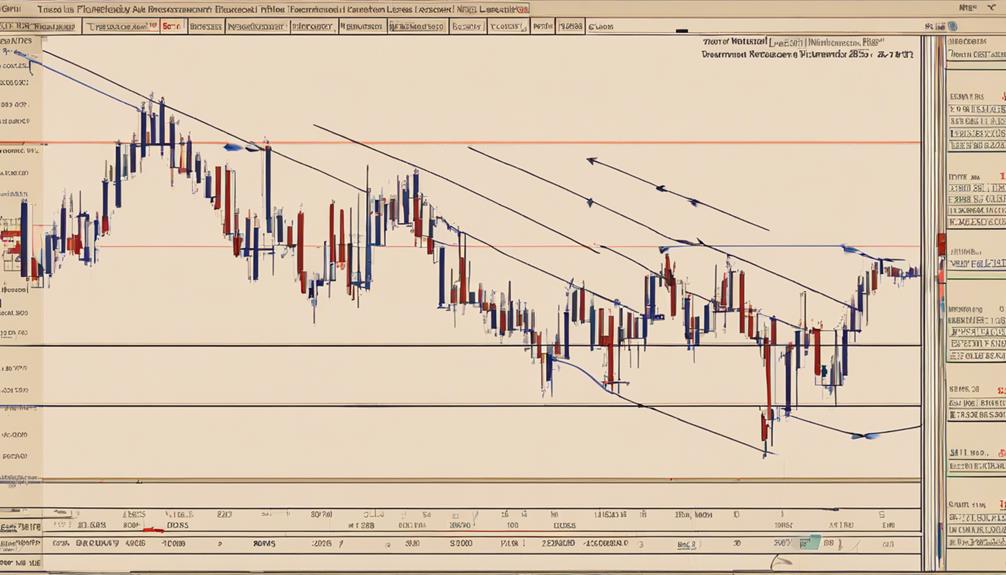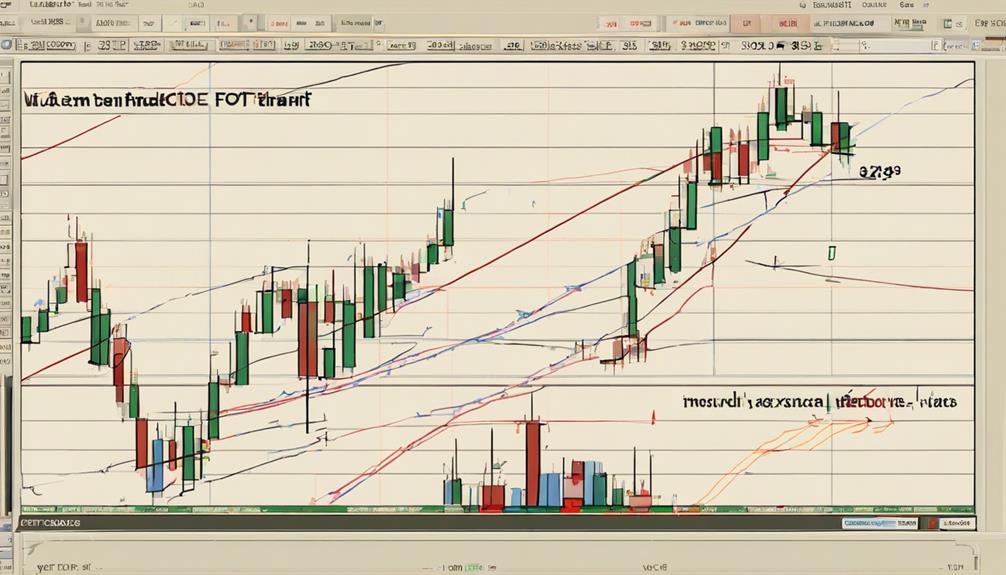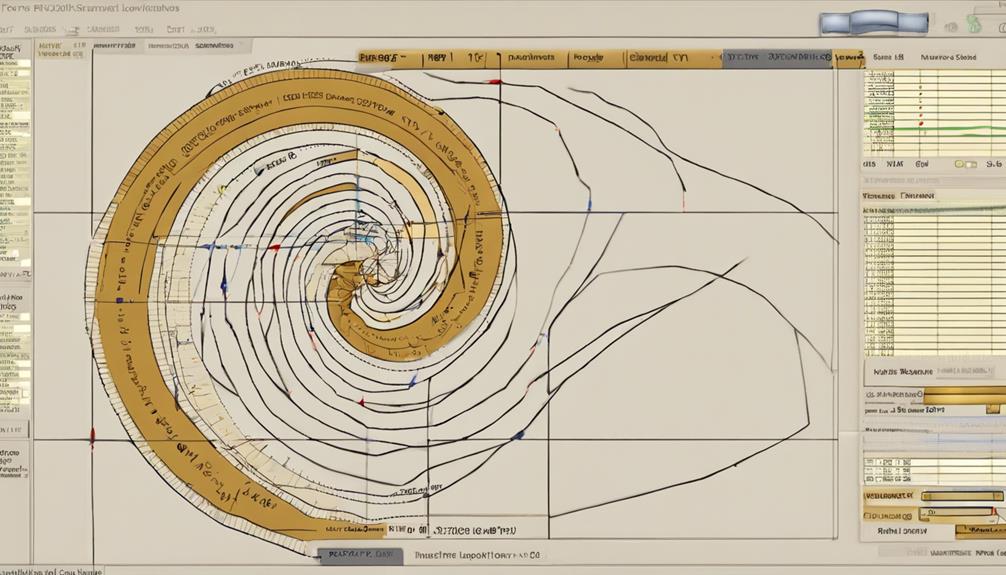Fibonacci retracements in forex trading offer a fascinating framework for analyzing market movements. Have you ever wondered how these magical numbers can potentially influence your trading decisions and help you pinpoint crucial entry and exit points?
Understanding the logic behind Fibonacci retracements could unveil a whole new layer of precision in your trading arsenal, leading to more informed and strategic moves. But how exactly do these ratios work their mathematical wonders in the dynamic world of forex?
Understanding Fibonacci Retracements
To grasp the concept of Fibonacci retracements in forex trading, familiarize yourself with the key ratios such as 23.6%, 38.2%, 50%, 61.8%, and 78.6%. Traders use these Fibonacci retracement levels as a crucial tool in technical analysis to identify potential support and resistance areas in the market.
By drawing these levels between significant price points, traders can anticipate potential price reversals. These retracements are particularly valuable after a significant market move, helping traders predict where prices might bounce or continue their trend.
Understanding Fibonacci retracements equips traders with valuable insights for making informed decisions regarding entry and exit points, as well as managing risks effectively in the dynamic world of forex trading.
Fibonacci Levels in Forex Trading

Understanding Fibonacci levels in Forex trading involves utilizing key percentages such as 23.6%, 38.2%, 50%, 61.8%, and 78.6% to anticipate and analyze potential price reversals. When using the Fibonacci retracement tool in Forex trading, you can draw Fibonacci levels between swing highs and swing lows to identify crucial support and resistance levels. These levels act as significant markers for traders to base their trading decisions upon. By incorporating Fibonacci ratios into your technical analysis, you can develop more effective trading strategies that consider price reversals at these key levels. This method enables traders to set optimal entry and exit points, manage stop-loss orders efficiently, and establish profit-taking targets with more precision.
Key Aspects of Fibonacci Levels in Forex Trading:
- Identify support and resistance levels.
- Develop trading strategies based on Fibonacci ratios.
- Utilize Fibonacci levels for price reversal analysis.
Practical Application of Fibonacci Retracements

Applying Fibonacci retracements in forex trading allows traders to strategically pinpoint potential reversal levels and plan their market entries and exits with precision based on key percentage levels. By utilizing Fibonacci retracement levels such as 23.6%, 38.2%, 50%, 61.8%, and 78.6%, traders can identify key support and resistance areas where price may reverse.
These levels are crucial for establishing effective entry and exit strategies, enhancing risk management practices, and improving overall trading performance. By analyzing historical price movements and applying Fibonacci ratios, traders can gain valuable insights into market dynamics and make informed decisions.
Incorporating Fibonacci retracements into trading strategies can provide a structured approach to navigating the forex market and identifying potential reversal points efficiently.
Benefits of Using Fibonacci Analysis

Utilizing Fibonacci analysis in forex trading equips traders with a strategic framework to pinpoint key support and resistance levels efficiently. When incorporating Fibonacci retracement levels into your trading strategy, you can benefit from:
- Identifying Key Levels: The Fibonacci tool helps you recognize potential support and resistance levels based on the Fibonacci sequence, aiding in decision-making.
- Enhanced Entry and Exit Points: By using Fibonacci ratios, traders can establish precise entry and exit points, reducing emotional bias and improving trading discipline.
- Improved Decision-Making Accuracy: Aligning with Fibonacci levels can increase the accuracy of your trading decisions, leading to better outcomes and enhanced overall trade performance.
Enhancing Forex Strategies With Fibonacci Retracements

To enhance your forex strategies effectively, integrating Fibonacci retracements can provide a structured approach to pinpointing crucial support and resistance levels based on key ratios. By applying Fibonacci retracement levels, you can identify potential support and resistance points that align with market movements, aiding in predicting price reversals and determining entry and exit points with more precision.
Using the Fibonacci tool in your forex strategies enhances trading precision and risk management by offering predefined levels that serve as guidelines for decision-making. Incorporating Fibonacci retracements into your trading approach can significantly improve your ability to navigate the forex market with greater confidence and strategic insight.
Are Fibonacci Retracements the Same in Forex and Option Trading?
Yes, Fibonacci retracement in options and forex trading are the same concept. Traders use these retracement levels to predict potential price reversals. Both markets rely on Fibonacci ratios to identify support and resistance levels, making Fibonacci retracement a valuable tool in both options and forex trading strategies.
Frequently Asked Questions
How Do You Read Fibonacci Retracement in Forex?
To read Fibonacci retracement in forex, you analyze key support and resistance levels based on the Fibonacci sequence. Identify potential price reversal points using tools like 23.6%, 38.2%, 50%, 61.8%, and 78.6%. Anticipate market behavior for informed trading decisions.
How Accurate Is Fibonacci Retracement in Forex?
In forex trading, Fibonacci retracement levels boast impressive accuracy, aiding traders in pinpointing potential reversals and critical entry/exit points. These levels are widely trusted, shaping market decisions and helping manage risk effectively.
Is Fibonacci Retracement a Good Strategy?
As a forex trader, using Fibonacci retracement can be a good strategy. It aids in identifying potential support and resistance levels, guiding your entry and exit points. Understanding its application in aligning price movements with Fibonacci levels is crucial for informed decisions.
What Is the Most Common Fib Retracement?
In Forex trading, the most common Fibonacci retracement levels are 38.2%, 50%, and 61.8%. These levels act as vital markers for potential market support and resistance. Look for price reactions at these levels for informed trading decisions.
Conclusion
In conclusion, Fibonacci retracements in forex trading are like a roadmap guiding you through the market's twists and turns. Just as a skilled navigator uses stars to navigate the sea, traders use Fibonacci levels to steer their way through price movements.
By understanding and applying these retracements, you can uncover hidden treasures of potential support and resistance levels, unlocking new opportunities for profitable trades in the vast ocean of forex trading.
